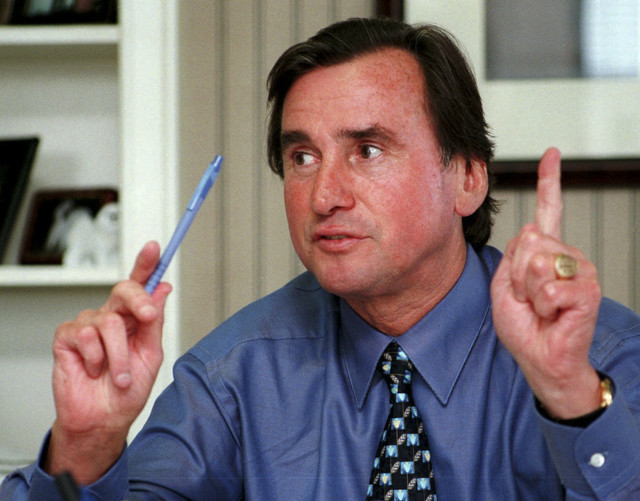FDA, Experts Disagree about E-Cigarettes
by Inside Science News Service, Benjamin Plackett
In recent years a new type of cigarette has begun to repopulate our restaurants, our subway trains and our movie theaters. It doesn’t burn tobacco, it doesn’t emit smoke and it lasts a lot longer than a traditional cigarette. It’s currently unregulated, but that may soon change, and experts are already debating the best approach.
The Food and Drug Administration can’t currently regulate electronic cigarettes because they don’t technically contain tobacco – even though the nicotine in them is derived from tobacco – something that has angered e-cigarette opponents.
“A lot of people feel like [the e-cigarette manufacturers] are exploiting a loophole,” said the director of Smoking Cessation Services at Columbia Univ. Medical Center, Daniel Seidman.
Electronic cigarettes turn nicotine and other chemicals into a vapor that’s inhaled by the user. Just one of the battery-powered devices provides as many as 300 puffs, roughly equivalent to the number of drags from an entire pack of conventional cigarettes.
The smoker inhales a mix of water vapor and nicotine among other chemicals including propylene glycol. For all of the differences between e-cigarettes and regular cigarettes, e-cigarettes still contain nicotine, which is addictive, and it is unclear exactly how much nicotine the e-cigarette smoker inhales.
However, e-cigarettes are thought to be less carcinogenic than regular cigarettes because they are non-combustible and do not contain tar. A 2010 study in the British Medical Journal found that “the scarce evidence indicates the existence of various toxic and carcinogenic compounds, albeit in possibly much smaller concentrations than in traditional cigarettes.”
So it seems there are several unknowns about e-cigarettes, notably the concentration of nicotine and whether they cause cancer – though we do know they likely cause heart disease and strokes.
Despite this uncertainty, the FDA recently decided to tweak their definition of a “tobacco product” to bring e-cigarettes under their jurisdiction.
“The FDA intends to propose a regulation that would extend the agency’s ‘tobacco product’ authorities – which currently only apply to cigarettes, cigarette tobacco, roll-your-own tobacco, and smokeless tobacco,” FDA spokesperson Jennifer Haliski wrote in an email.
Michael Siegel from Boston Univ.’s School of Public Health is a firm believer in the power of e-cigarettes to help smokers quit – or at the very least to provide a less harmful alternative to cigarettes for a nicotine hit.
“They’re safer because there’s no tobacco in the product, there’s also no burning, it’s just heated up. When you take away the tobacco and combustion then you’re taking away the bulk of the problem,” said Siegel. But he added that “It’s not a question of whether e-cigarettes are going to be regulated, it’s more about how they’re going be regulated.”
Siegel remains worried that the wrong kind of regulation from the FDA could end up harming the e-cigarette’s potential to help smokers.
Seidman suggested that there isn’t any proof of e-cigarettes successfully weaning smokers off tobacco. Of the few scientific studies published on the matter, there’s no real consensus.
Many of the smokers in survey-based studies continue to smoke cigarettes even when they’ve tried to shift to e-cigarettes, said Seidman. “There’s a health concern if you end up maintaining your addiction. You can’t smoke [cigarettes] in a lot of public places. This is a marketing strategy for the manufacturers. It keeps the addiction alive.”
The FDA declined to comment on the difficulties involved with drafting rules for a product about which there has been so little conclusive evidence. This has led to speculation about what form these new FDA enforced regulations might take, a subject on which the FDA was also predictably tightlipped. “FDA cannot comment on the contents of the proposed rule,” said Haliski.
“They could say let’s apply everything we know about cigarettes to electronic cigarettes,” said Siegel.
Then again, they could come up with an alternative framework specifically designed for e-cigarettes. Siegel said that the way FDA personnel speak of a “risk continuum” of different tobacco products leads him to be “cautiously optimistic that they won’t lump the same regulations [on e-cigarettes]. I think we’ll see a different set of regulations,” said Siegel.
Both Siegel and Seidman agree that creating a uniform quality standard is one of the most important needs from the FDA’s impending ruling, so that consumers know that the cartridges won’t leak and that the chemicals are of a pharmaceutical grade.
In the meantime, Seidman worries that e-cigarettes simply assist smokers who wish to bring e-cigarettes into places such as airports, where the smoker would otherwise be forced to forgo a smoke.
Tobacco industry giants are launching their own brands of e-cigarettes.
“There are people who say anything the cigarette companies do is evil,” said Siegel. He suggested that “they’ve just recognized a market and they want a piece of the pie.”
But Seidman said the tobacco industry learned its lessons from selling cigarettes and “their strategy is to add e-cigarettes to the equation rather than subtract traditional tobacco.”
http://www.laboratoryequipment.com/news/2013/08/fda-experts-disagree-about-e-cigarettes


